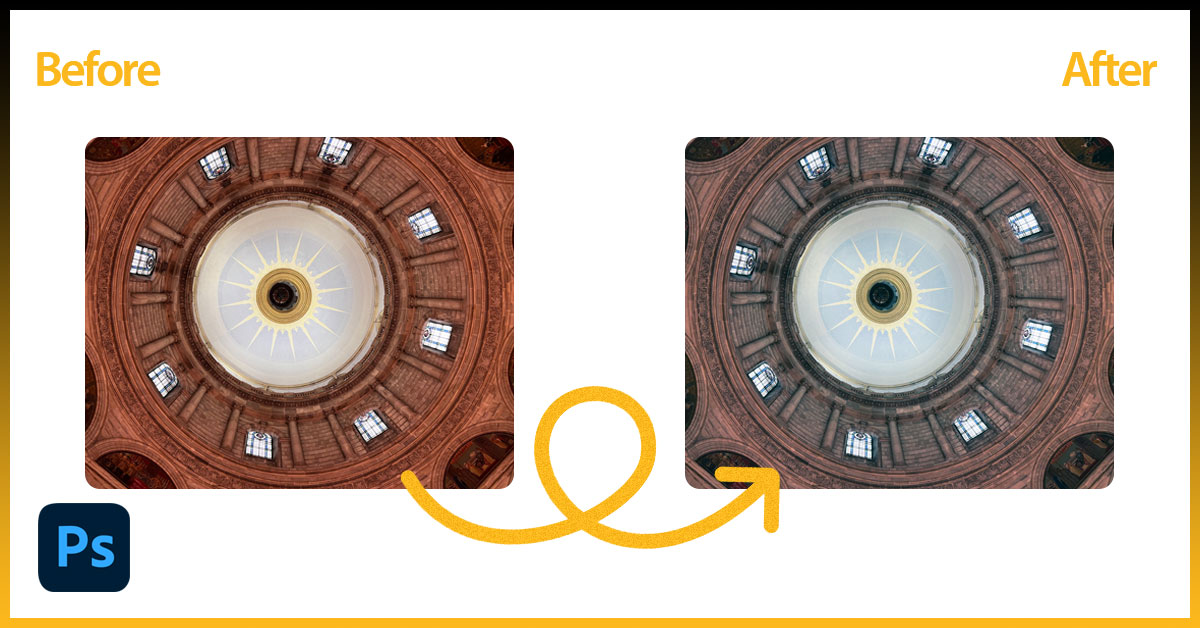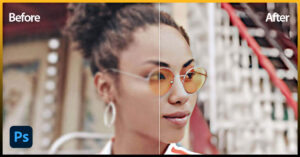Are you just getting fed up with the constant color tint appearing on your image? You should notice that it is nothing but a frustrating color cast issue of the image. Sometimes it affects certain parts of an image or as a whole.
A minor light issue or white balance malfunctioning of your camera is enough to bring this unwanted color cast into your picture.
But relax! You are not alone here in dealing with the issue. It’s even easier to correct color casts and balance the hues of your image.
Open your image in any photo editing software like Photoshop. Then go to Levels, Curves, or White Balance adjustments and remove color casts. In most cases, an uncalibrated monitor displays your image’s colors inaccurately. So, make sure to calibrate your monitor first.
Keep on reading to learn more advanced tips and tool suggestions to avoid or correct color cast issues in your image.
How To Correct Color Casts And Balance Hues For Accurate Representation?
Here I am going to discuss the effective features in Adobe Photoshop that you can use to fix the color cast of your image and make it more color-balanced. Here you go!
- Adjusting White Balance During Color Correction in Photoshop
When you want to neutralize any of the color cast of any image that is caused by different light sources, adjusting the white balance is one of the most effective options to choose from. The white balance mainly helps to identify the overall color cast of the image and fix it.
Anyway, there are a few effective techniques that you can use to correct the white balance in your images in Photoshop. Let me explain one by one:
Method -1: Using Color Balance
This is more likely the easiest way I find to adjust the white balance of my image in Photoshop. You can also use it by following the below quick suggestions:
- First, go to the Image menu and select Adjustments > Color Balance. As a shortcut, press Ctrl+B on Windows and Command+B on Mac.
- A dialog box should appear on your screen where you’ll get three different sliders. They are shadows, midtones, and highlights.
- Drag any of the sliders to the right and add that color to the image. Or slightly drag it to the left to reduce that color.
- You can also click the neutral color picker next to each slider and select a neutral gray area in your image. Sit back! Photoshop now does everything for you to adjust the color balance based on that point.
Method -2: Using Camera Raw Filter
This is another effective method, you can try it.
- Go to Filter > Camera Raw Filter.
- The Camera Raw window opens where you will find the white balance.
- Now you will have two options. Either use the temperature slider to adjust the cool and warmth of the image or drag the White Balance eyedropper to balance the color.
Method -3: Adjust the White Balance Using Curves
Curve adjustment should be very common to you. Do you know it is even a great tool that helps you adjust the white balance and fix the color cast as well? The best part here is that it offers more targeted control over specific color changes in your image and fixes them.
For instance, there are two ways you can apply curves to adjust the shadows, highlights, and mid-tones for all colors. Either you can automatically fix the white balance or manually do it on an image using Curves.
Here is how you can fix the color cast and balance the color of an image using the curve manually:
Step -1: With the image uploaded in your Photoshop workspace, go to Image > Adjustments > Curve. As a shortcut key, you can press Ctrl+M on your Windows and Command+M if you’re running Photoshop on your Mac.
Step -2: Right after that, a curve dialog box appears on your screen with the histogram. Now this is the time to choose a color eyedropper under the histogram.
Here are some common casts and their opposite colors you can choose in this instance:
- Red cast: This makes the image appear warm or pinkish. Its opposite is cyan.
- Green cast: The image looks greenish or sickly. Its opposite is magenta.
- Blue cast: The image has a cold or bluish tone. Its opposite is yellow.
Step -3: Here, you need to identify the color cast of your image and drag the mid-tone slider slightly toward the opposite color of the cast.
Step -4: Make sure to click OK when you are done!
Automatic White Balance Adjustment Using Curves
To automatically adjust the white balance using curves, here are the simple steps to follow:
Step -1: First, go to the Layers panel and click on the Adjustment Layer icon at the bottom. Now select Curves from the dropdown menu.
Step -2: Now go to the Properties panel of the Curves adjustment layer. Then hold down the Alt/Option key and click on the Auto button. This will open the Auto Color Correction Options.
Step -3: With the open Auto Color Correction Options window, select the Find Dark & Light Colors option. Check the box for Snap Neutral Midtones. This will automatically correct the white balance by adjusting the color values.
Step -4: Click Ok to apply the changes.
2. Using Selective Color Adjustments
Selective color adjustment is an essential feature in photo editing software that allows you to adjust the specific color of your image very easily. This is mainly great when you want to change the color of a specific object or elements of any image.
Anyway, to use this option in Adobe Photoshop,
- Go to the top bar menu and choose Layer > New Adjustment Layer > Selective Color.
- You will find a new layer appearing just above your duplicate layer.
- Now choose the color that you want to adjust from the appearing menu in the properties panel.
- Drag the sliders and increase or decrease to balance the selected color in your image.
3. Utilize the HSL Sliders
The HSL slider in Photoshop can be very effective for fixing color casts in your images. For instance, the hue slider adjusts the actual color itself, and saturation controls the intensity of the color. And the lightness slider adjusts the brightness of your image.
To use these sliders, click as follows:
Layer > New Adjustment Layer > Hue/Saturation.
A dialogue box will appear on the screen as shown below. Now adjust the slider and fix your image.
4. Log LUTs (Look Up Tables) in Color Correction
LUTs mainly stands for Look Up Table, a specialized digital file in Photoshop that is designed to change the color and tone of an image. This is one type of color filter that works by using predetermined mathematical formulas and altering the colors in an image.
Rather than manually editing to fix the color cast, you can use these filters and make your editing process quicker and easier.
Here I am providing suggestions on how you can use LUTs in Photoshop:
- First up, you need to add LUT to your Photoshop project. To do so, you must unzip the LUT zip file.
- Now open your image in Photoshop workspace by pressing ctrl + o.
- Then go to the adjustment layer and create a new color look-up adjustment layer.
- Finally, click on the ‘Load 3D LUT’ button and point your Photoshop to locate your unzipped files.
5. Use the “Match Color Adjustment”
Let’s move to the next best tool that you can use to remove the unwanted color cast from your image— that is “Match color adjustment.” It adjusts the hue, saturation, and brightness of an image and helps to reduce the color differences between the original image and the reference image.
Follow the below 3 steps in this instance:
- Go to “Image” > “Adjustments” and choose “Match Color.”
- A “Neutralize” box will appear on your screen from where you need to adjust the color. Adjust the Luminance, Color Intensity, and Fade slider according to your image disturbance.
- Finally, click OK and finalize your image.
6. Calibrate Your Monitor
When you are fixing the color cast of your image, calibrating the monitor is another major factor you need to consider. It mainly ensures that your display shows colors accurately based on industry standards.
If your monitor isn’t calibrated, it is obvious you might see the color inaccurately even if it is all right in the image.
Always calibrate your monitor before moving the editing process. Adjust the white balance, brightness, color temperature, color tints, and color tone of your monitor based on your Windows or Mac settings.
Fixing Color Cast with Color Grading Tools in DaVinci Resolve
Beyond the fundamental tools, there are a few advanced tools in photo editing software you can use to fix the color code of your image. Color grading is such an effective one. It is a great tool that helps correct the lighting and exposure issues of an image.
It mainly works by manipulating the color tone and hue to bring out the desired effect. Well, you will find the tool in any advanced photo editing software.
Now I am going to show how you can use color grading in DaVinci Resolve to fix the color cast:
Step 1: Export your image into DaVinci Resolve and analyze it to find where exactly the color cast occurs.
Step 2: Now go to the color grading panel in the bottom left corner.
Step 3: Then use the color-grading tools and refine the colors of your image. Here you will find these primary wheels: Lift, Gamma, Gain and Offset. Take note of how these tools can help correct color in an image:
| Control | What It Does |
| Lift | Adjust the shadows of an image. You will reveal or hide details in the darker areas. |
| Gamma | Adjusts the mid-tones of an image. |
| Gain | Controls the brightness of the highlighted parts of an image. You can make them either more intense or softer. |
| Offset | Adjusts the overall color values of the entire image. |
You can also use the color wheels to manipulate individual color hues, saturation, and luminance for more targeted adjustments. For a detailed overview, you can check out this detailed video tutorial
Additional Top 5 software To Know For Advanced Photo Correction
Well, that’s up to here, you have got an idea of how you can correct color cost using all advanced tools in Adobe Photoshop and in DaVinci Resolve. Now let’s have a quick glimpse at what more softwares are there that you can use to fix color cast and balance color for accurate representation.
Here you go:
1. Adobe Lightroom
Adobe Lightroom is a powerful tool that you can use for advanced photo correction, especially when you are managing color balance and fixing color casts. It has all the user-friendly interfaces of the tools that make it easier for the editors to adjust tones, contrast, and saturation with precision. You can also try it out!
Key Tools for Color Correction in Adobe Lightroom
i) White Balance: Like Adobe Photoshop, you will find effective White Balance tools in Adobe Lightroom as well. For instance, you can adjust the temperature and tint of an image to remove color casts and achieve accurate color.
Simply access the Basic panel and adjust the sliders for temperature and tint to neutralize color casts.
ii) HSL/Color Panel: This will help you to fine-tune specific color ranges and correct tints. Find the tool in the Develop module and access the Hue, Saturation, and Luminance sliders. Now tweak the specific color ranges and get precise adjustments.
iii) Tone Curve: The tone curve in Lightroom controls shadows, mid-tones, and highlights and helps you get a balanced color correction. Access the tool from the Develop module.
Now drag the points on the curve or adjust sliders to control shadows, midtones, and highlights.
2. GIMP
GIMP or GNU Image Manipulation Program, is another free and versatile tool for advanced photo correction. Here you will get a good range of powerful tools to adjust color balance, correct color casts, and fine-tune images with precision. Even I also mostly use this tool wherever I get stuck on any point of color cast while editing.
Key Tools for Color Correction in GIMP
i) Color Balance: This tool helps you to adjust the shadows, mid-tones, and highlights and effectively correct the color cast. You will find the Color Balance tool Colors > Color Balance in the image menu.
Now head to the sliders and tweak the Cyan-Red, Magenta-Green, and Yellow-Blue channels for balanced tones.
ii) Curves: Similar to the tone curve in Lightroom, you will find a curve tool in GIMP as well. It lets you adjust contrast and color balance. Access it in Colors > Curves. Drag the points and control brightness levels and correct colors across different tonal ranges.
iii) Auto White Balance: GIMP also provides an automatic way to correct white balance. Find it in Colors > Auto > White Balance. Access this tool to quickly adjust the color temperature and neutralize any unwanted color casts.
3. Capture One Pro
If you are looking for a high-end photo editing software to be pro in the color balance of any image, Capture One Pro should be the next best approach. This photo editing software is even highly popular among professionals for its exceptional color correction capabilities.
Its advanced tools offer precise control over color balance, tones, and overall image quality.
Key Tools for Color Correction in Capture One Pro
i) White Balance: Capture One Pro offers a highly accurate White Balance tool to fix the color casts. Access the tool from the adjust tab. Adjust the kelvin and tint sliders. Or you can use the White Balance Picker for precise corrections.
ii) Color Editor: With the use of this powerful tool, you can fine-tune the specific color ranges in your image. Simply go to the Color tab and use the Basic, Advanced, and Skin Tone options to adjust hue, saturation, and lightness.
iii) Color Balance Tool: This tool allows for three-way color grading that is perfect for advanced corrections. Go to the Color tab and access this tool. Now adjust the shadows, mid-tones, and highlights separately to get a balanced and professional look.
4. Skylum Luminar Neo
Skylum Luminar Neo is both user-friendly and powerful photo editing software that is designed to simplify advanced photo corrections. With its AI-driven tools, you will have a seamless editing experience for correcting color balance and enhancing images.
Key Tools for Color Correction in Skylum Luminar Neo:
i) Accent AI: This advanced tool mainly uses AI to automatically enhance your photo and adjust color contrast and exposure in one click. Access the tool from the Essentials panel and move the slider to get balanced and natural-looking color corrections.
ii) Structure AI: If you want to fine-tune the details of an image without oversaturating colors, this tool is great in this instance. It’s even simple to use. You just need to move the slider and adjust the clarity.
iii) Color Tool: This is the perfect tool that you can effectively use to manually adjust color balance and saturation. Locate this tool from the Essentials panel. Then use the Remove Color Cast slide to neutralize unwanted tints. You can even use Saturation and Vibrance sliders for a balanced look.
5. Pixlr
Pixlr is the most popular web-based photo editor that offers all-powerful tools for quick and effective color correction. This software is perfect for those who want advanced features without the complexity.
Key Tools for Color Correction in Pixlr:
i) Adjustment Layers: With the Adjustment Layers in Pixlr, you can do all advanced color corrections in your image. Through this non-destructive editing tool, you can tweak settings, try different effects, and always revert to the original.
ii) Color Balance: This is an effective tool in Pixlr that helps you correct color casts and make your colors look natural—especially for skin tones. You can adjust the Red, Green, and Blue channels to remove all unwanted tints.
iii) Curves and Levels: Curves and Levels are more likely the key for fine-tuning exposure and contrast in Pixlr. You can control the brightness of highlights, midtones, and shadows in your image.
How To Remove Unwanted Color Cast With Professional Online Services?
Well, you have done all the effective and easy-to-go processes to fix color cast in an image. But in case you have a stubborn or complex color cast that you can’t fix effectively with a basic tool, it’s better to use a professional service or free online editor.
They use all advanced techniques or have access to specialized software to tackle challenging color issues.
For your convenience, here we have listed some of the top photo editing services you can choose to correct the color cast of your image online for free:
1. Path Foto

Path Foto is an experienced image editing company that has been serving globally for 10 years. They use manual methods instead of AI that offer precise editing for complex tasks, including color correction.
This advanced photo editor company uses platforms like Dropbox for seamless file transfer and provides extended storage options for your completed work. The best part is you will get 24/7 customer support and unlimited revisions only to ensure your color correction needs are met to your satisfaction.
2. Media.io
Media.io offers a free, AI-powered online auto-color correction app that is designed to enhance photo and video quality effortlessly. Its advanced AI will simplify your editing process and allow you to correct any color issues in your image with a single click.
It’s even quite straightforward to access their photo editing services. Just upload your photo or video, and the AI does the rest. You will get your enhanced content effortlessly.
3. Repairit Online Photo Repair
Repairit Online Photo Repair is an advanced tool that is designed to fix various issues in your photos, including color cast problems. Though it is a paid tool, you can repair up to 3 old photos and colorize three pictures for free here.
Using the advanced power of AI, it fixes photos online without compromising original quality or integrity. It is easy to use Repairit Online Photo Repair online. Just upload a photo with color cast issues and press the “Repair” button, and done!
What Are The Common Reasons For Color Casts In An Image?
Now that you have an idea of how you resolve the color cast of any image, what are the actual reasons behind such a color cast in an image?
The lighting source where you are capturing the image or the white balance issues of the camera is mainly reasonable behind it.
Get a detailed overview below:
1. Light Source:
Many artificial lights have a distinct color cast. You will find many incandescent bulbs have a warm, reddish hue. Besides, fluorescent lights can cast a green or blue tint on the image. When you are capturing the image under different mixed light sources, it can create an uneven color cast.
2. Reflected Light:
Colored objects in the environment have a high chance of reflecting their color onto your subject. If you are photographing near a brightly colored wall, it might make the skin appear to have a tint of that color.
3. White Balance Issues
Every camera has a white balance setting that mainly neutralizes the color temperature of a scene and presents the white objects as white. Incorrect white balance settings can lead to a color cast.
For example, if you’re using an “auto” white balance setting under artificial light, it might not accurately capture the colors.
4. Lens Filters
Lens filters used in the camera have a high impact on creating a color cast on your image. Filters like warming (yellow/orange) add a yellow/orange tint while cooling (blue) filters add a blue tint to your images.
Tips to Avoid Color Cast on Digital Photos
Though it seems the camera setting causes the color cast of an image, the good news is that you can easily prevent it. For instance, here are some effective tips you can follow to ensure the best color balance in your image:
1. Adjust the white balance in camera settings
If you are shooting an image in a single location, it’s best to use the custom White Balance setting. After setting exposure and shutter speed, place a white sheet of paper in front of the camera, and then take the photo.
Then, navigate to the Custom White Balance menu, find the photo of the paper, and select it. The camera will then use this as a reference to adjust all other colors.
In case you’re shooting in multiple locations or with moving subjects, you can use Auto White Balance (AWB) to adjust the color temperature based on the ambient light.
2. Use RAW Format
When you are saving a digital image, use RAW format instead of JPEG. RAW files offer more flexibility in adjusting white balance and other settings during post-processing.
3. Check Reflections
In some cases, you can avoid color cast before you take the photo. This is all about your studio setting. When taking photos, always try to avoid reflective surfaces and objects. For instance, remove items like aluminum sheets, metal surfaces, or mirrors that can cause unwanted color cast or cover them with black or white sheets.
4. Avoid Intense Light
Be cautious of extremely bright light sources, such as the sun’s glare or strong yellow/orange lights. These can cause overexposed or underexposed images that lead to color cast issues.
Frequently Asked Questions
How to identify color casts?
Pay closer attention to your image and identify the area of white, gray, or neutral in color. If they appear slightly blue, red, green, or any other color, that’s a good indication of a color cast.
Is white light free from color casts?
Technically, white light is a combination of all colors in the visible spectrum. When these colors combine in the right proportions, they appear white to our eyes. In photography, it is the standard of all lights. Thus, there is no need to correct it.
Can cameras cause color cast?
Yes, it is possible! If your camera isn’t set correctly, it can create a color cast. This mainly occurs due to the mismatched white balance presets, which results in unwanted color tints in the image.
In Closing
A color cast is enough to ruin your image no matter how much you have added your creative touch to it. As a newer to these issues, it is obvious you will wonder about how to fix color cast and balance hues for accurate representation.
It’s easy if you have a basic knowledge of photo editing software like Adobe Lightroom or Adobe Photoshop. Use the right color adjustment tool and make your photo enhanced like you ever desired.





